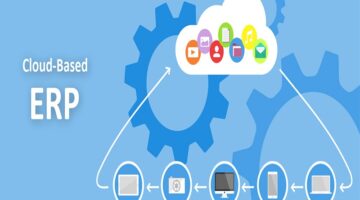
How to Utilize Augmented Intelligence Tools in the USA
Meanwhile, augmented intelligence tools are continually gaining market share in the United States. With further technological breakthroughs, augmented intelligence tools will offer new and creative means for people to improve their abilities and efficiency. If these tools can be used well, they would increase efficiency, understanding, and business opportunities in many different fields. What does augmented intelligence mean? How can this tool help humanity? This article introduces US best practices for using augmented intelligence in various industries.
Technologies that intend to boost human intelligence and abilities fall under the banner of augmented intelligence. The goal of augmented intelligence, unlike that of artificial intelligence trying to imitate human cognition, is not duplication but complementarity. It brings together the machine-learning aspects of pattern recognition, problem solving, and careful analytical thinking with uniquely human capabilities such as creativity, empathy, and judgment. Such tools support human capabilities by giving them insights, predictions, and recommendations without duplicating their functions. They are a supplement, not a substitute for human aid workers and their work.
Among the tools being used to create augmented intelligence are virtual assistants, data analytics software, natural language processing applications, and predictive modeling. All these technologies delve into data, find relationships, and bring information to the surface for human decision-makers. The idea is therefore to enhance rather than replace human performance.
Paired with the right applications, augmented intelligence can bring about faster speed and higher quality in a variety of different functions and industries. With adoption still building momentum, understanding how to best integrate and incorporate augmented intelligence will be critical for organizations in the public and private sectors alike.
Best Practices for Implementation
To fully realize the advantages of augmented intelligence tools in the USA, organizations should follow certain best practices:
- Do It in Installments: Implement augmented intelligence capabilities through an evolutionary rather than a revolutionary process. Begin with a small pilot project and gradually expand the scope.
- Focus on Augmenting Humans: Design solutions focused on assisting humans rather than replacing them. Maintain human oversight and involvement in key decisions.
- Embed Ethics: Build ethical considerations directly into the machine learning development process to address biases and avoid harmful outcomes.
- Establish Governance: Develop augmented intelligence policies and governance models focused on transparency, accountability, and responsible use.
- Upskill Employees: Provide training focused on working alongside augmented intelligence tools to upskill employees and ease adoption.
- Enable Collaboration: Use human-machine collaboration interfaces that allow fluid interactions between humans and A.I. systems.
- Consider Job Impacts: Evaluate how augmented intelligence will impact jobs, skills, and workflows, and proactively plan for transitions.
- Maintain Data Quality: Ensure high-quality, well-organized data flows to support effective development and outcomes from augmented intelligence tools.
These strategies help set augmented intelligence implementations up for success and maximize benefits for organizations and workers. Beyond these guidelines, the most effective approach will depend on an organization’s specific needs, capabilities, and sector.
Key Use Cases
Augmented intelligence tools have widespread applicability across industries in the USA. Here are some of the key ways these technologies are being utilized today:
Healthcare
Clinical decision support systems analyze patient data to provide medical recommendations to doctors and nurses. Augmented intelligence prioritizes critical information to improve care.
Financial Services
Banks use augmented analytics platforms to quickly parse loan applications, reducing approval wait times. The tools flag risky loans for further human review.
Manufacturing
On factory floors, augmented intelligence guides production robots, optimizes workflows, and monitors equipment performance in real-time to boost efficiency.
Retail
Stores augment human sales associates with virtual shopping assistants that engage online customers and provide personalized product recommendations.
Government
Public agencies employ augmented data analysis to identify wasteful spending and model the impact of policy changes to inform legislative decision-making.
Cybersecurity
Security operations centers use automated threat intelligence to rapidly surface relevant signals from massive data streams, allowing analysts to identify and respond to threats faster.
Transportation
In aviation, augmented intelligence aids pilots by processing flight data to optimize routes, improve fuel efficiency, and enhance safety.
Energy
Utility companies apply augmented intelligence to forecast electricity demand across grids and optimize power generation and distribution.
As these examples demonstrate, augmented intelligence has wide-ranging transformational potential across sectors. But it’s critical to strategically evaluate use cases against core capabilities and needs. Organizations should identify where human-machine collaboration can create the most value and focus initial implementations on those high-impact areas.
Key Challenges
While adoption continues to grow, effectively leveraging augmented intelligence comes with some unique challenges:
- Alienation of Affected Workers: Transitioning to augmented intelligence changes jobs and workflows, potentially leading to worker anxiety, distrust, or skills gaps. Organizations need to carefully manage this change.
- Lack of Transparency: With machine learning models, it can be difficult to explain internal workings and recommendations. Lack of transparency can reduce trust in the technology.
- Bias and Fairness: Like other AI systems, augmented intelligence models can perpetuate harmful societal biases if they are not proactively addressed.
- Data Privacy: Collecting and analyzing more customer data raises potential privacy concerns that organizations need to preemptively mitigate.
- Cybersecurity Risks: As with any software, vulnerabilities in augmented intelligence tools can be exploited by malicious actors if not properly secured.
- Measuring ROI: Organizations need frameworks to accurately measure the return on investment from augmented intelligence implementations.
- Over-Reliance on Technology: If users become overly dependent on augmented intelligence, it can atrophy human skills and knowledge over time.
By anticipating these risks and challenges, organizations can proactively address them through governance structures, testing processes, change management programs, and responsible design principles.
While revolutionary advances like general AI still remain theoretical, augmented intelligence is here today, ready to collaboratively amplify human potential. Adopting these technologies strategically, with a focus on transparency and responsible design, will fuel innovation and progress across sectors in the USA.
Conclusion
Augmented intelligence represents an enormous opportunity to enhance human capabilities and drive growth for organizations across industries. As this technology matures, the potential applications are nearly endless. However, for organizations to fully benefit from augmented intelligence tools in usa, they need to take an iterative, ethical approach focused on meaningful human-machine collaboration. With responsible implementation guided by human needs and objectives, augmented intelligence can help unlock a safer, more productive, and more enlightened future across sectors in the USA.




